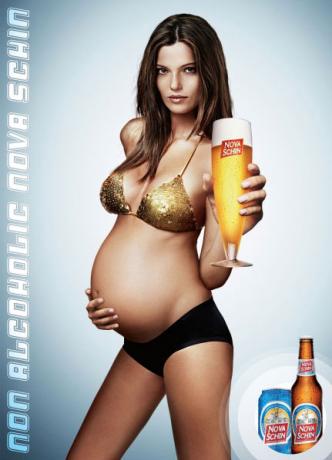Friedan and Tuchman
Page 54 of our text states:
Friedan's critique of women's magazines runs alongside a similar assessment of advertising; the sterotypes reproduced by the housewife's journals were the same as those exploited by advertisers. Tuchman's 1978) argument about the symbolic annihilation of women is based on an analysis of advertising as well as other media.
APPLIED TO TODAY: in this text, Friedan's outlook on magazines for women is being compared to advertisements which exhibited the same stereotypes as women. Today, we can see this concept simply in titles of womens magazines such as Women's World, Women's Day, Women's Health, Cosmopolitan, InStyle, and many more. In these magazines, women are flowered with recipes, make-up tips, health and fitness cues, clothing trends, and even articles on how to please their man. These women's magazines are clearly exhibiting the same stereotypes that are portrayed in many advertisements featuring women where she is bribing with her sex appeal, cleaning with her cleaning products, being glamoured with her make-up, and working hard to reach the ideal hour-glass figure that women should stereotypically have.
In this same text, Tuchman addresses that the argument on 'symbolic annihilation' of women is not only based on advertising, but other media as well. No only in ads to we see these stereotypes of women, but on television shows, movies, etc. Below are a few examples of stereotyping in women's advertisments today.


The World Wide Web
The classroom text looks closely at the significance of the World Wide Web as well as the rapid increase in technology and its affect on gender representation. Page 65 states:
As technology improves and converges, new media will become a more influential source of gender information, but we can probably expect it to be, more-or-less, like an interactive version of the kind of TV, movie and magazine material[...]there's no reason to think that gender representations within new media will be any different to the gender representations elsewhere. The Web provides opportunities for individuals and groups to provide alternatives to the existing set of dominant ideas about women and men, on their own websites.
APPLIED TO TODAY
The World Wide web isn't neccesarily an influential source if it is presumed to alter the way that we have treated gender stereotypes through the present. However, by the great population lengths which the internet reaches, and the opportunity for individual web users to contribute personal and opinionated posts through blogging, commenting, etc., the issue isn't whether the media will now have the power, but the promotion that it is the individual that has the power through the help of the World Wide Web to attribute their own opinions as to what gender roles should really be like.
Through the World Wide Web, we are not only teaching our children at a young age to respect their rights as individuals, but we are teaching it to them in a way that says they do not need media influence to figure out who they are. Click here to view a video displaying this concept.
COSMOPOLITAN
I am an avid reader of Cosmopolitan magazine. However, this magazine demonstrates a sadly realistic view of what tactics the media uses to persuade women into thinking a certain way about several topics. One of my pet peeves in the way Cosmopolitan does this, is their ability to repetitively contradict itself.
Page 53 of the text comments on Cosmopolitan magazine states:
..Cosmo does not bother being consistent: one article would encourage readers to be happy with their body size, whilst another would encourage slimming; men are given both sympathy and criticism; marriage might be endorsed or condemned; romance adn fidelity might be good, or bad, depending on the article; and the style might be serious or silly.
The text goes on to explain that the editor of Cosmo at the time did this on purpose, for a balance. It is no wonder that in today's society women are part of an ever-changing role, and are often pulled in different directions, being told different opinions on how we should act, talk, look, what we should wear, and what we should do.
APPLIED TO TODAY
Based on the fact that Cosmopolitan has these ever-changing codes for women, we can see the same in current advertisements. This "balance" that is talked about also adheres to a variety of the female population, and addresses each individuals needs. In some instances, one might think that this is immoral to do so, creating a general confusion about how women are viewed in a modern day society. Below are some advertisements which show these contradictions.



In conclusion, the chapters read during the class in the past couple weeks have reviewed Friedan's outlook on women in magazines, the significance of the World Wide Web on gender roles, Cosmopolitan magazine's many contradactive opinions, and much more useful information having to do with women's roles in advertising. Although many of these concepts originated many years ago, it is easy to see that they are still very applicable in a modern day society.
